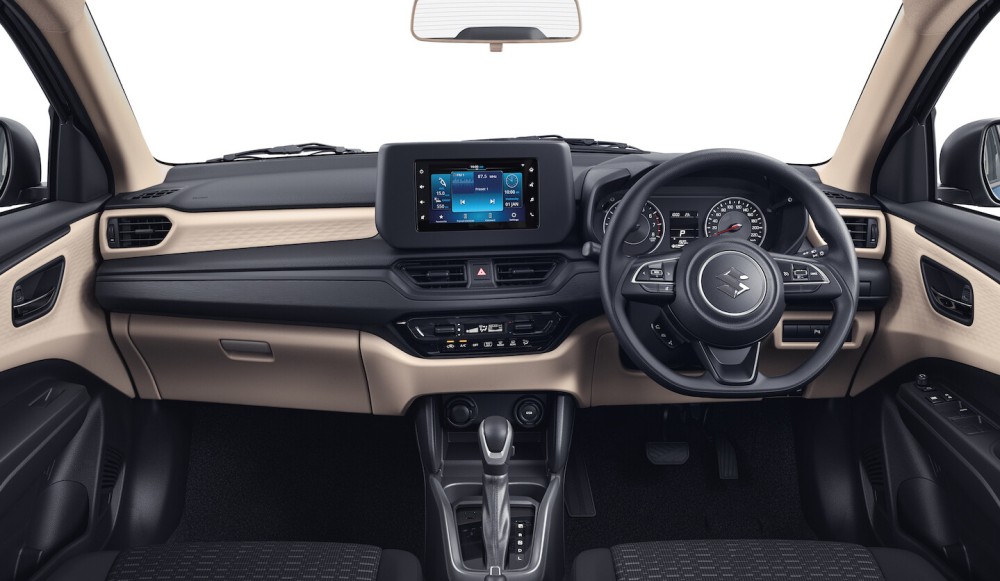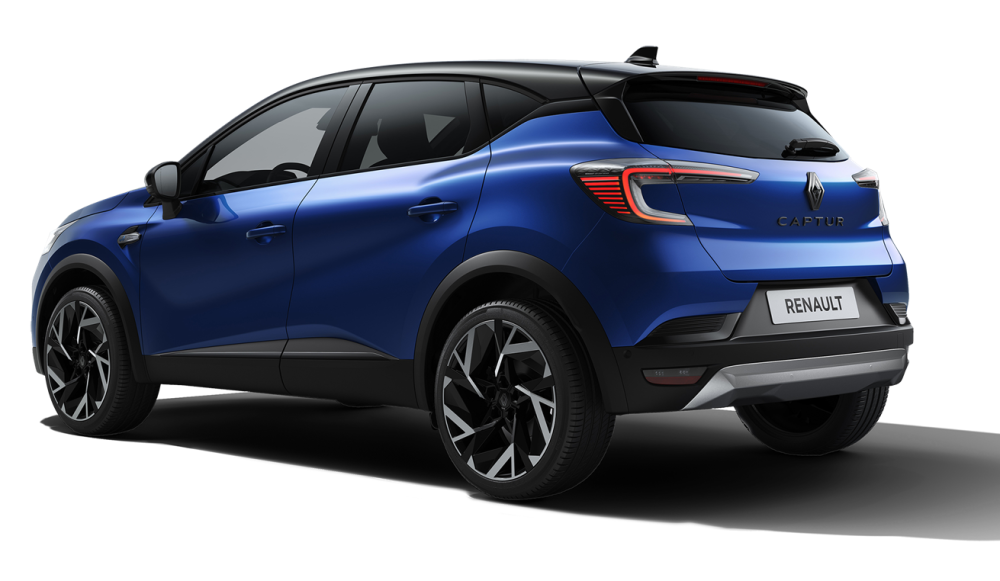The new GWM Ora 3 shows that our electric future need not be dull and boring.
Electric vehicles face many obstacles to wider adoption in South Africa, with our questionable power supply being the most obvious challenge. Their biggest problem is cost, however, because our archaic tax laws still treat them as electronic luxury toys rather than motor vehicles, thus incurring massive and unfair import tariffs on all imported EVs. It doesn’t help that many EVs are pricey even before those taxes, either.
Ignore those useless electric quadricycles that pop up in SA as the Next Big Thing every few months and consider real cars instead, and you’ll soon realize that even an entry-level three-door Mini Cooper SE electric vehicle costs far more than three-quarters of a million Rand. That’s a lot of money for a car that has neither a usable battery range nor practical cabin space, so it makes sense that many other manufacturers are now seriously gunning for the affordable EV market as well. GWM is leading this charge for more affordable EVs with their new Ora 3 hatchback.

What is the GWM Ora 3?
Few local motorists will be familiar with the Ora name, because the brand itself was only established in China in 2018, with export outside its home market only commencing at the end of 2022. The first model to arrive in South Africa is known simply as the GWM Ora 3, ditching the “Good Cat” or “Funky Cat” monikers it wears in other markets in favor of something a little more sober-minded.
The Ora 3 is a hatchback similar in size to a VW Golf, but its smooth styling makes it appear somewhat smaller than the angular German. Its roofline is higher than that of the Golf, though, because the battery pack lives under the passenger compartment’s floor, and that lost cabin space had to be made up elsewhere. There is ample cabin space for four above-average-sized adult males, although the luggage volume of only 228 litres with all seats in use is a bit on the stingy side.

Cute looks
In a world where even budget-biased econoboxes are endowed with frowning headlights and aggressive detailing, the GWM Ora 3 appears fresh-faced and friendly. At first glance, its front end could look like the result of a romantic entanglement between a VW New Beetle and BMW-era Mini, or maybe like the offspring of a Fiat 500 and a Porsche 911, depending on your point of view.
Either way, the Ora 3 manages to combine these styling influences into a whole that looks distinctive in its own right. It’s no less interesting at the back, where the tail light elements are hidden in the lower edge of the rear windscreen, giving an uncluttered if slightly bulbous appearance to the Ora 3’s derriere. The all-LED exterior lighting allowed the Ora 3’s designers to include elaborate light shows from both the front- and rear ends, in much the same way as you’d get from a modern German car.

GWM Ora range
Four derivatives of the GWM Ora 3 are offered in South Africa, with the price leader being the Ora 300 Super Luxury. This variant features a smaller battery pack than the other models, with a 48 kWh battery instead of the 63 kWh battery used in the other models.
This restricts the 300's claimed driving range to the claimed 300 km indicated in its badge, but it features the same 126 kW/250 Nm electric motor as the other variants, so performance is roughly equal across the range.
 It should also be noted that, while the Ora 3 doesn’t have eye-widening headline output figures in comparison to larger (and more-expensive) EVs, it carries a surprisingly small weight penalty in spite of its hefty batteries. The resulting base kerb weight of only 1,540 kg makes the Ora 3 one of the lightest EVs currently out there, which brings real benefits to both performance and driving range.
It should also be noted that, while the Ora 3 doesn’t have eye-widening headline output figures in comparison to larger (and more-expensive) EVs, it carries a surprisingly small weight penalty in spite of its hefty batteries. The resulting base kerb weight of only 1,540 kg makes the Ora 3 one of the lightest EVs currently out there, which brings real benefits to both performance and driving range.
Similar trimmings can be had with a larger battery in the 400 Super Luxury, which improves the claimed driving range to 400 km. The same battery is used in the two high-end Ora 3 models, with the “Ultra Luxury” adding more creature comforts and the “GT Ultra Luxury” getting yet more features as well as rather attractive aesthetic enhancements such as carbon-fibre-look fender flares and a diffuser, chin spoiler, and tailgate spoiler with red accents.

Ora 3 driving impressions
The friendly folks at GWM Haval Silver Lakes, part of the CMH Group, handed us the keys to a top-trim GWM Ora 400 GT Ultra Luxury for a few hours, so we set out to navigate congested suburban roads as well as a stint on the freeway, to get a feel for the new car in local usage conditions.
The first surprise is how normal the Ora 3 feels to the driver. Yes, the EV’s power delivery is vastly different from that of an internal combustion engine, but the operation of the vehicle itself is very similar to a conventional car. While GWM prioritised usable driving range over outright performance, which is the sensible approach for a vehicle of this type, this doesn’t mean that the Ora 3 is slow.

GWM claims a 0 - 100 km/h sprint in 8.4 to 8.5 seconds, but on-road performance suggests that it might be even quicker. There’s enough instant torque on hand to see the driven front wheels occasionally scrabble for traction, and the forward surge that results from mashing the right-hand pedal into the carpet is sustained well past the legal speed limit.
Letting go of the accelerator pedal presents the next surprise, because the regenerative braking is strong enough to slow the compact EV down with surprising alacrity. Full one-pedal driving is available if the appropriate drive mode and menu settings are selected, but even normal drive mode often presents enough electric braking to render the brake pedal irrelevant all the way down to crawling speeds.
Adapting to this strong “engine braking” effect happens quickly, and from that point onwards, piloting an Ora 3 becomes second nature. In a market where a measure of familiarity will be a strong selling point for any EV, the Ora 3 will certainly appeal to those who want to go electric without the need for a steep learning curve for the operation of their new EV.

There’s some character hidden within
Upon entering the Ora 3, the driver is greeted by a couple of animated Koi “swimming” lazily across the two 10.2-inch colour dash display screens. This sets the tone for the generally restful experience on offer, but also demonstrates that the designers had some fun while creating this car. There’s no real sound emanating from the electric motor or its single-speed transmission, of course, but the little growl it emits from the audio system when Sport mode is selected is cute and amusing.
Do not be deceived into thinking that the Ora 3 is at all toy-like, mind you. The electric steering assistance can be adjusted according to the driver’s preferences, and while there is no real feedback coming from the front tyres, the steering effort is well-judged and does communicate some info regarding the state of grip underneath.
The handling balance is generally neutral with safe understeer appearing at the grip limits of the efficiency-focused tyres, while those limits are much higher than most drivers are ever likely to explore. Overall, the ride-handling balance is spot-on for both urban and freeway driving, and comfort levels are high with muted cabin noise levels, bar some wind hiss at high speeds.

Very comprehensively equipped
The standard equipment list is extensive across the range, with all models featuring such niceties as 18-inch alloy wheels, a 10.25-inch colour infotainment touchscreen with wired smartphone mirroring and six speakers, front- and rear USB ports, a wireless charging pad, adaptive cruise control, automatic climate control, another 10.25-inch colour screen that serves as digital instrument cluster, keyless entry, electric windows all round with one-touch up-and-down operation, and heated and folding exterior mirrors with electric adjustment.
Ultra Luxury trims also receive a tilt/sliding panoramic sunroof and automatic tailgate, while the GT trim adds bespoke body styling and contrasting interior trim with a red-and-black color scheme. Equally importantly, the perceived build quality is very high, with soft-touch materials scattered across the interior touch points, and an obvious attention to assembly quality.
Safety equipment is equally well catered for, with seven airbags (of which one is a novel centre-mounted one to separate front seat occupants), stability- and traction control, tyre pressure monitoring, rollover intervention, ISOFIX child seat anchors, and secondary collision mitigation all part of the basic safety kit. A 5-star Euro NCAP crash test rating proves that all this hardware results in excellent real-world safety as well.

The driver aid list is eye-widening, too. In addition to the aforementioned adaptive cruise control, traffic jam assist and traffic sign recognition is included across the range, along with lane-change assist, lane-keeping assist, blind-spot monitoring, rear cross-traffic alert, automatic emergency braking in all directions, front- and rear-collision warning, a surround-view camera, and a “smart dodge system” which helps the vehicle plot its own route around obstacles in the event of an emergency.
Ultra Luxury trims add automatic parking assist and reversing memory assist to get you out of an inadvertent dead-end, while the GT also receives front cross-traffic alert with automatic braking. Most of these driver aids are optional in premium-brand vehicles costing 50% more, so their standard inclusion in the GWM Ora 3 range goes a long way towards justifying the asking price.

How much does the GWM Ora 3 cost?
As mentioned at the beginning of this article, all EVs are overpriced in South Africa as a direct consequence of short-sighted government policies. However, in this rarified space, the entry-level Ora 300 Super Luxury currently holds the title of South Africa’s most affordable new EV, with its base price tag of R 686,950.
At this price point, its closest opponent is the BYD Atto 3 (another Chinese import), which starts at more than R 80,000 more expensive than the basic Ora. The sweet spot in the Ora 3 range is likely one step upwards, where the Ora 400 Super Luxury will set you back R 775,950 - still less expensive than the more spartan and considerably less practical Mini Cooper SE and about on par with the more powerful but shorter-range basic Volvo EX30.
Warranty terms were still to be finalized at the time of publication, but are likely to include a vehicle warranty for five years or 100,000 km and a service plan for the same time and distance, as is the norm with other current-generation GWM and Haval products. The EV battery itself will likely carry the same warranty for eight years or 150,000 km that features on most Euro-market EVs.
GWM Ora 3 Prices:
Ora 300 Super Luxury: R 686,950
Ora 400 Super Luxury: R 775,950
Ora 400 Ultra Luxury: R 805,950
Ora 400 GT Ultra Luxury: R 835,850

GWM Ora 3 Verdict
A near-R 700,000 entry price still puts even South Africa’s most affordable EV outside the reach of most motorists. Still, it could present a viable, individualistic, capable, and surprisingly appealing alternative to established entry-level premium-branded ICE vehicles with similar performance, such as the Audi A3 Sportback, BMW 1-Series, and Mini Cooper.
Opting for an Ora 400 Super Luxury could also see you considering the Mercedes-Benz A200 or even a Golf GTI. But none of them will have the standard equipment you’d get in the GWM, and none of them will be as distinctive either. In the world of boutique compact cars, the GWM Ora 3 makes a particularly strong case for itself, and its inherent merits mean that the compromises are too few to really matter.
Martin Pretorius
- Proudly ALL THINGS MOTORING









